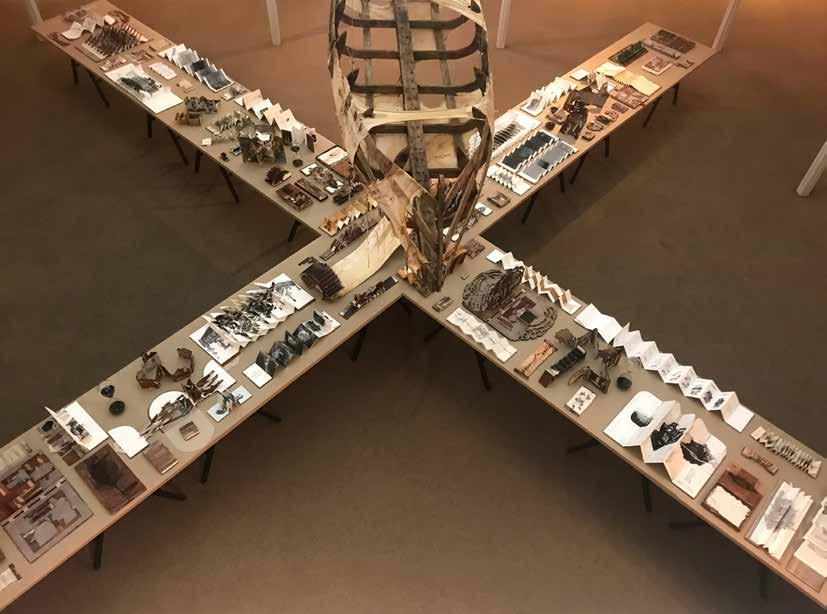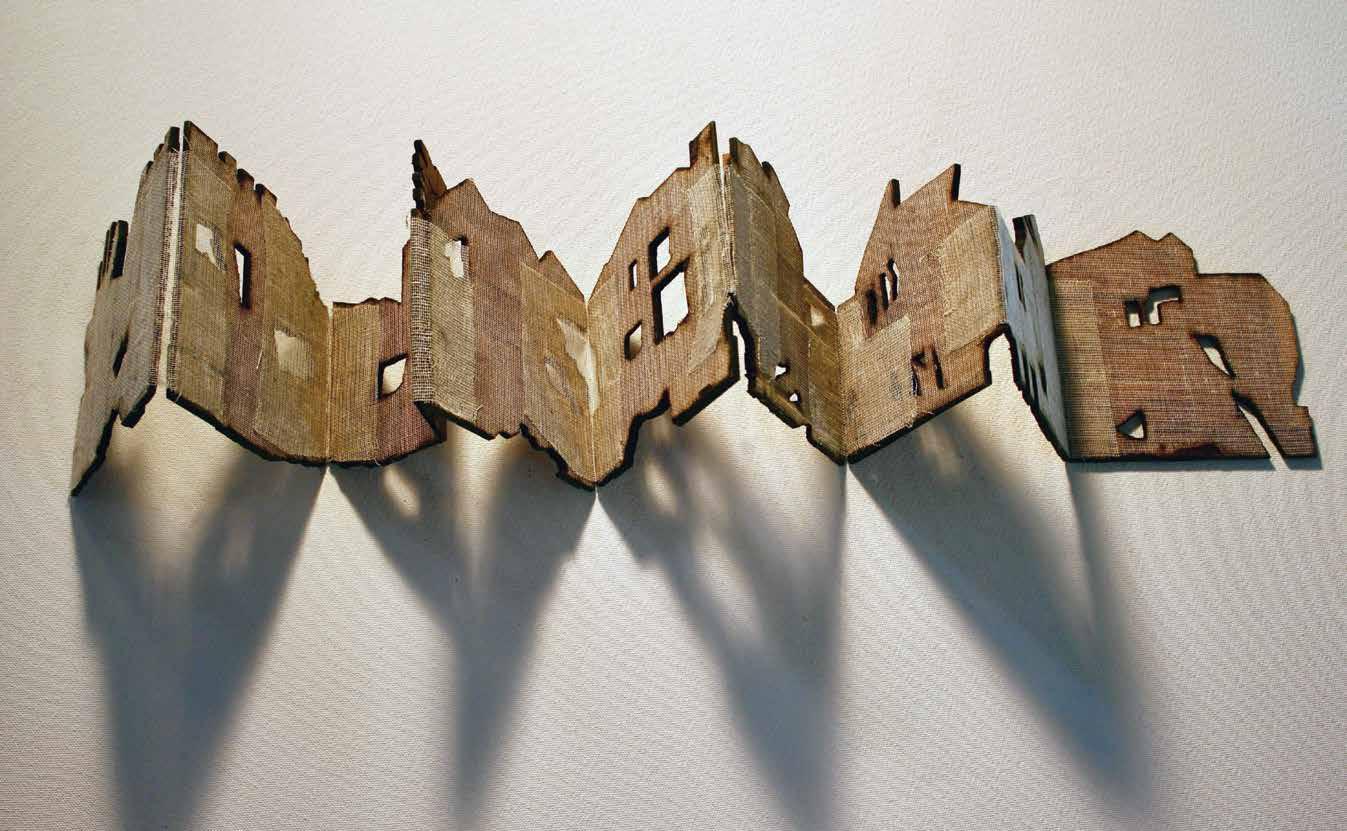
101 ways to long for a home
emma willemse
Installation of a hundred and one artist’s books
by Emma Willemse
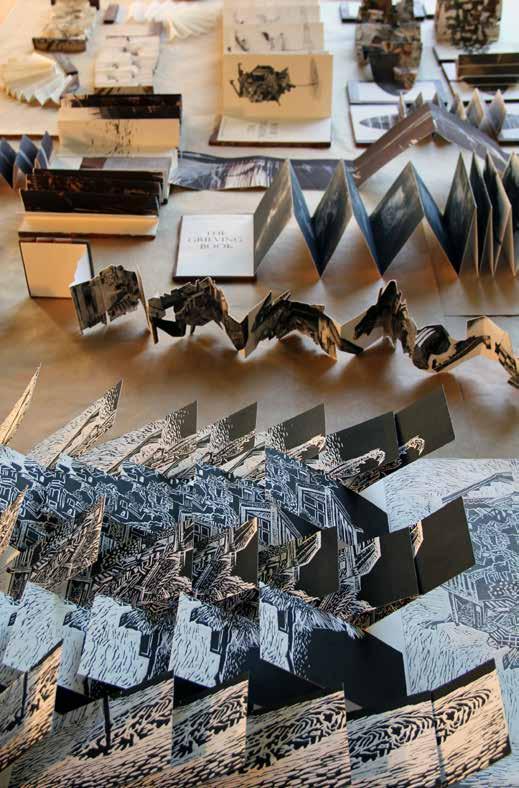
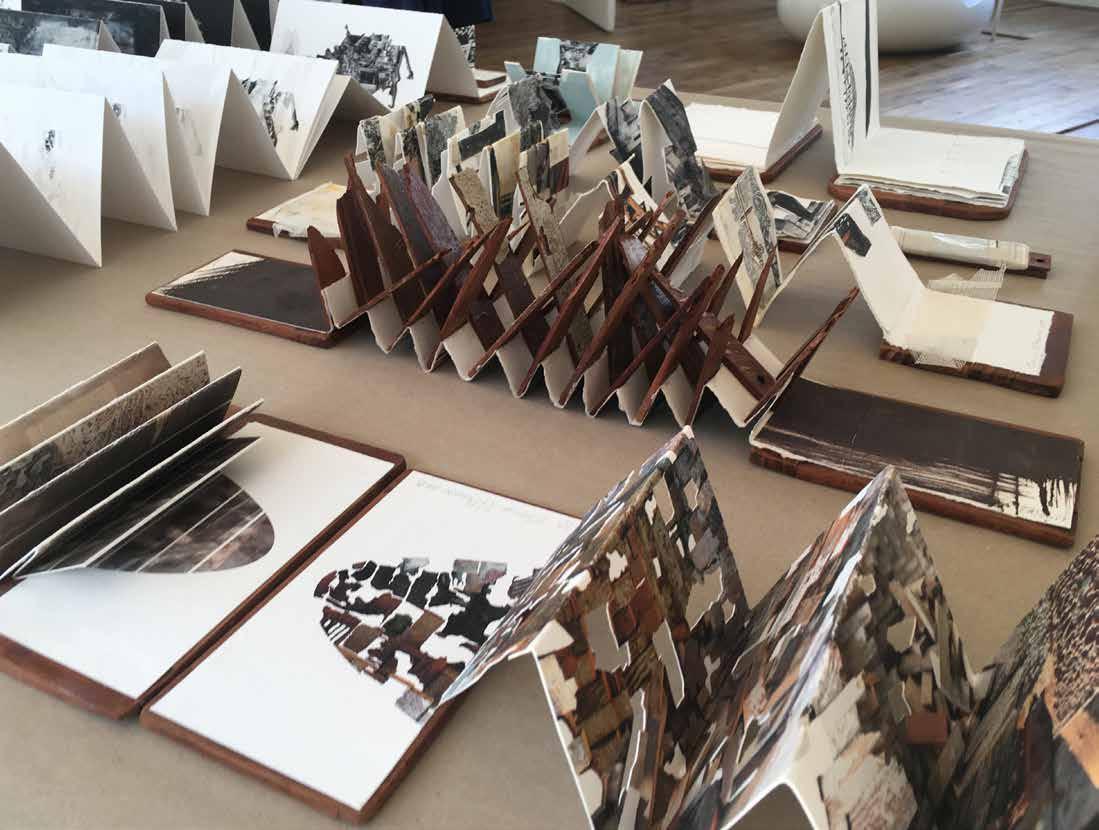
Artwork specification
Title
101 ways to long for a home
Date
2013 to 2018
Format
Installation
Hundred and one hand-made artist’s books
Four sand-timers
Tables or shelves
Medium
Cover pages of concertina books made from discarded parquet floor blocks salvaged from Woodstock, Cape Town, South Africa.
Inside pages of concertina books made from various papers, drawings in mixed media, digital prints, collages, linocut prints, etchings, discarded parquet floor blocks thinned in half and fabrics.
Sculptural book-like objects constructed from discarded parquet floor blocks
Hand-made boxes with lids constructed from discarded parquet floor blocks, filled with found objects and hand-made papers.
Glass sand-timers with black sand inside.
Dimensions
Installation variable and site specific
Performing the book
A silent performative intervention by the artist: interacting with books and re-curating the installation
Duration: 60 minutes
101 ways to long for a home (installation view, Paris, France, 2016).
Discarded parquet floor blocks, mull fabric and mixed media on paper.
Photo credit: Katja Gentric.
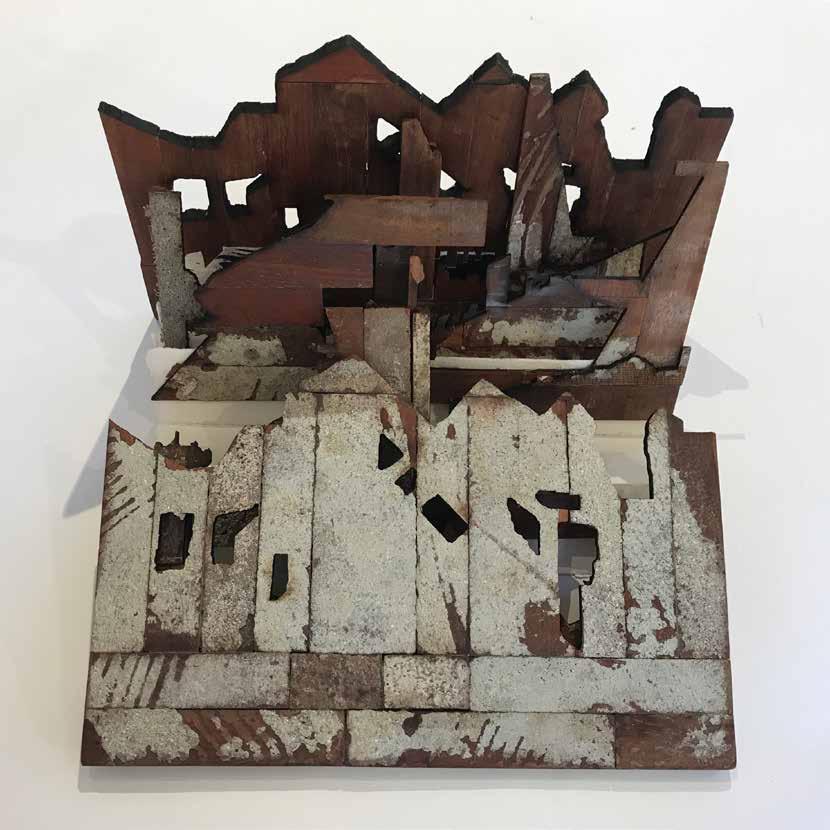
“…if loss is known only by what remains of it, then the politics and ethics of mourning lie in the interpretation of what remains – how remains are produced and animated, how they are read and sustained.”
(End,DL & Kazanjian,D (eds) 2003:ix)
Artist’s statement
The installation of artist’s books, titled 101 ways to long for a home , was conceived as an imaginary manual and archival tool to record and re-envisage ways to process the loss of a home. The series consists of hand-made books and booklike objects in various formats. They have been constructed in a range of digital and hand-rendered techniques, though the common binding factor is that each book cover and each book-like sculptural object is constructed from reclaimed parquet floor blocks.
The 101 ways of the title is intended to be an ironic comment on the quick-fix repair promised by the ever-popular genre of the self-help book, as well as an attempt to critique the prescriptive notion sometimes encountered in the knowledge field of displacement that such traumatic experiences may be fixed by formulae.
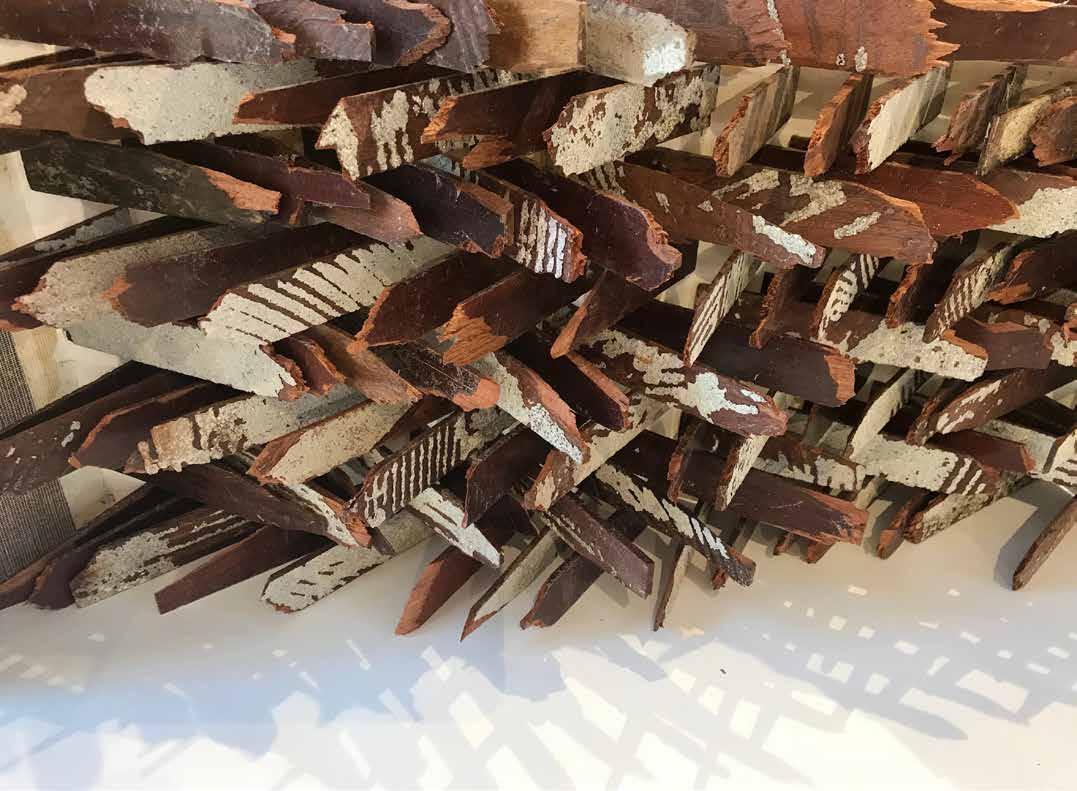
Aesthetics of loss
My interest in the archaeology of psychological trauma stems from experiencing the loss of a number of homes in the 1990’s. This thematic concern is still relevant in the contemporary world due to the ongoing involuntary uprootment of people through warfare, political strife and xenophobia. My research in this field has explored the constructs of place, memory and identity related to experiences of displacement, and as such, has personal and universal significance.
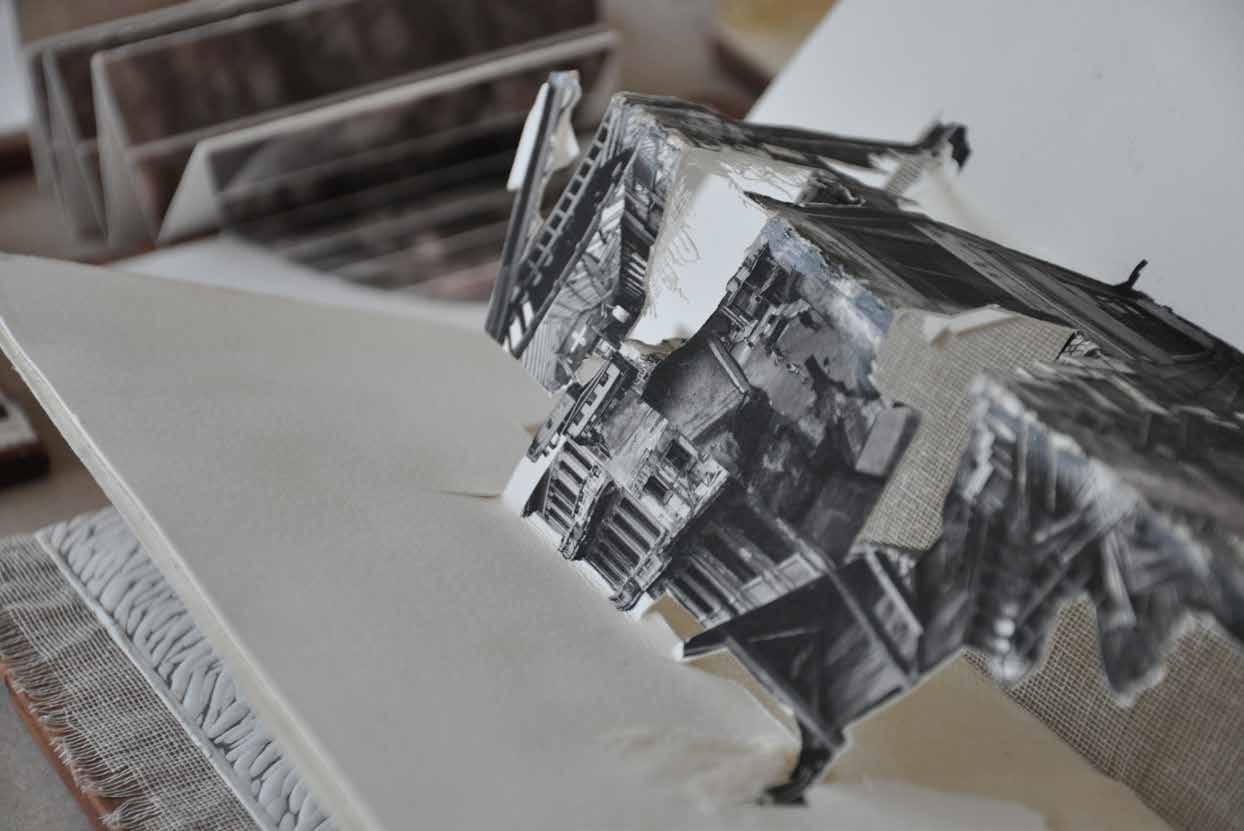
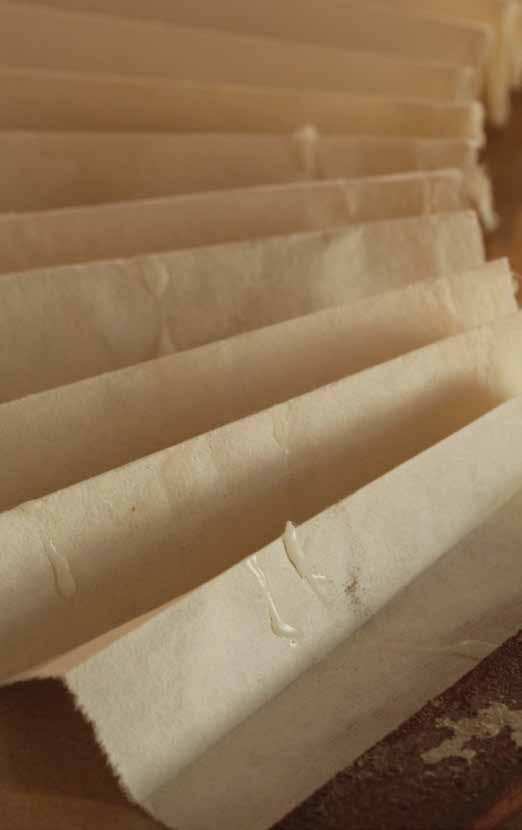
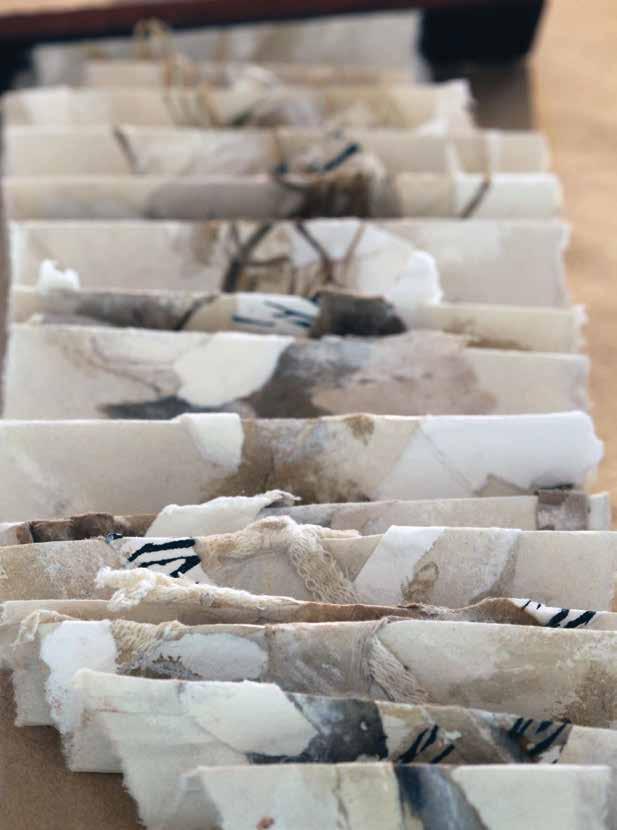
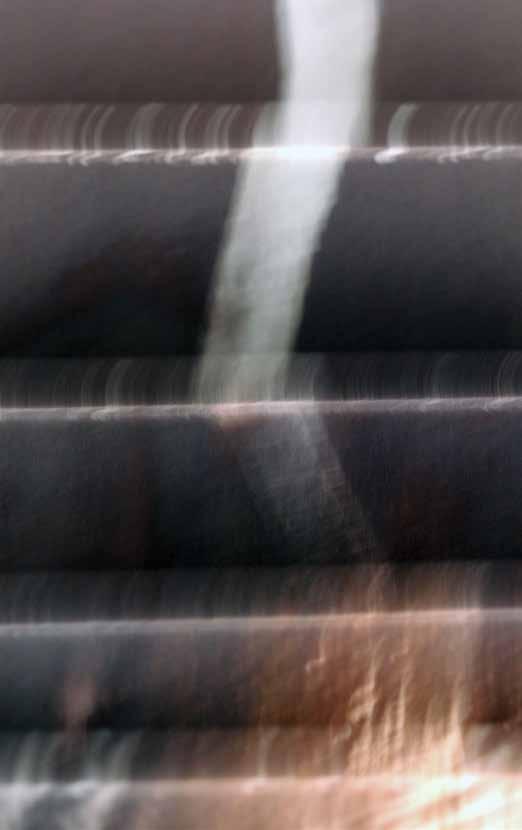
Discarded parquet floor blocks
In her book The skin of the film , Laura U Marks maintains that objects “are not inert and mute but they tell stories and describe trajectories” (2000:120). In this way, Marks assigns an animated role to objects in which their meaning and significance resides in their physicality, materiality and tactility, in the same way “as habit stores memory in the body” (2000:121).
In the earliest stages of this creative journey, I managed to salvage a bag of parquet floor blocks from one of my previous homes, just a few hours before it was demolished. This event initiated my deeper understanding of the profound meaning inherent in the floor of a home. The floor maps the interior spaces, thereby defining the areas where people experience their most intimate moments. The floor witnesses each room’s human interactions, conversations, laughter and whisperings. We leave DNA, that most individual of physical traces, on the floors of our homes. These blocks were used to create a series of sculptures and suspended sculptural installations.
On first encounter with my artwork, the undersides of the blocks are more evident since the marks of cement residue bear witness to their once having existed in a place from which they were forcefully removed. These inverted parquet block fragments hold subtle qualities of erasure and elusiveness which imply the imperfect memory processes linked with displacement trauma. By this actual inversion of my home’s floor blocks in my artmaking process, I have attempted to re-connect to my history.
Once the supply of my own floor blocks was exhausted, I sourced the rest from second-hand builders’ yards in South Africa, usually in areas where social engineering practices - disguised as urban renewal - are prevalent. These blocks link unequivocally to many floors in many homes that no longer exist.
Book cover (detail). Discarded parquet floor blocks.
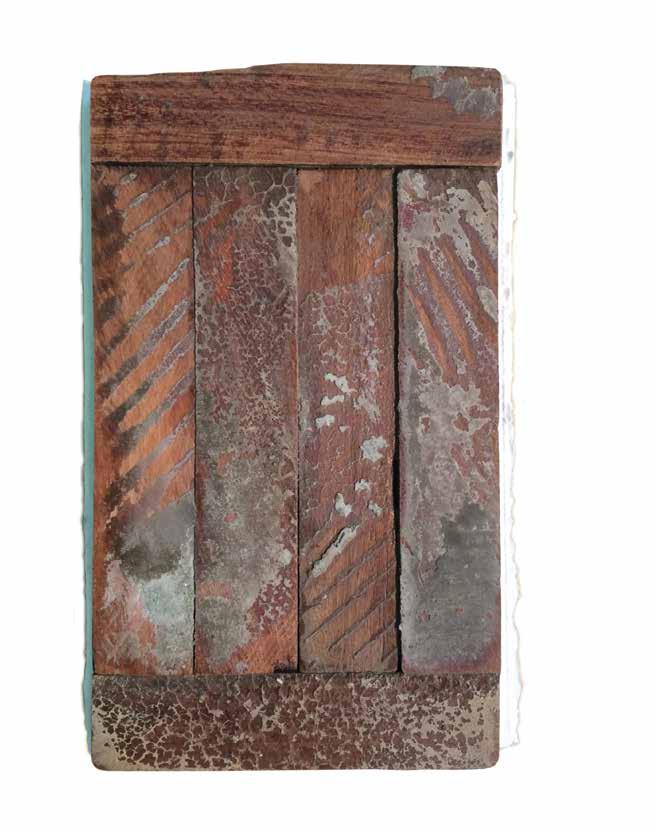
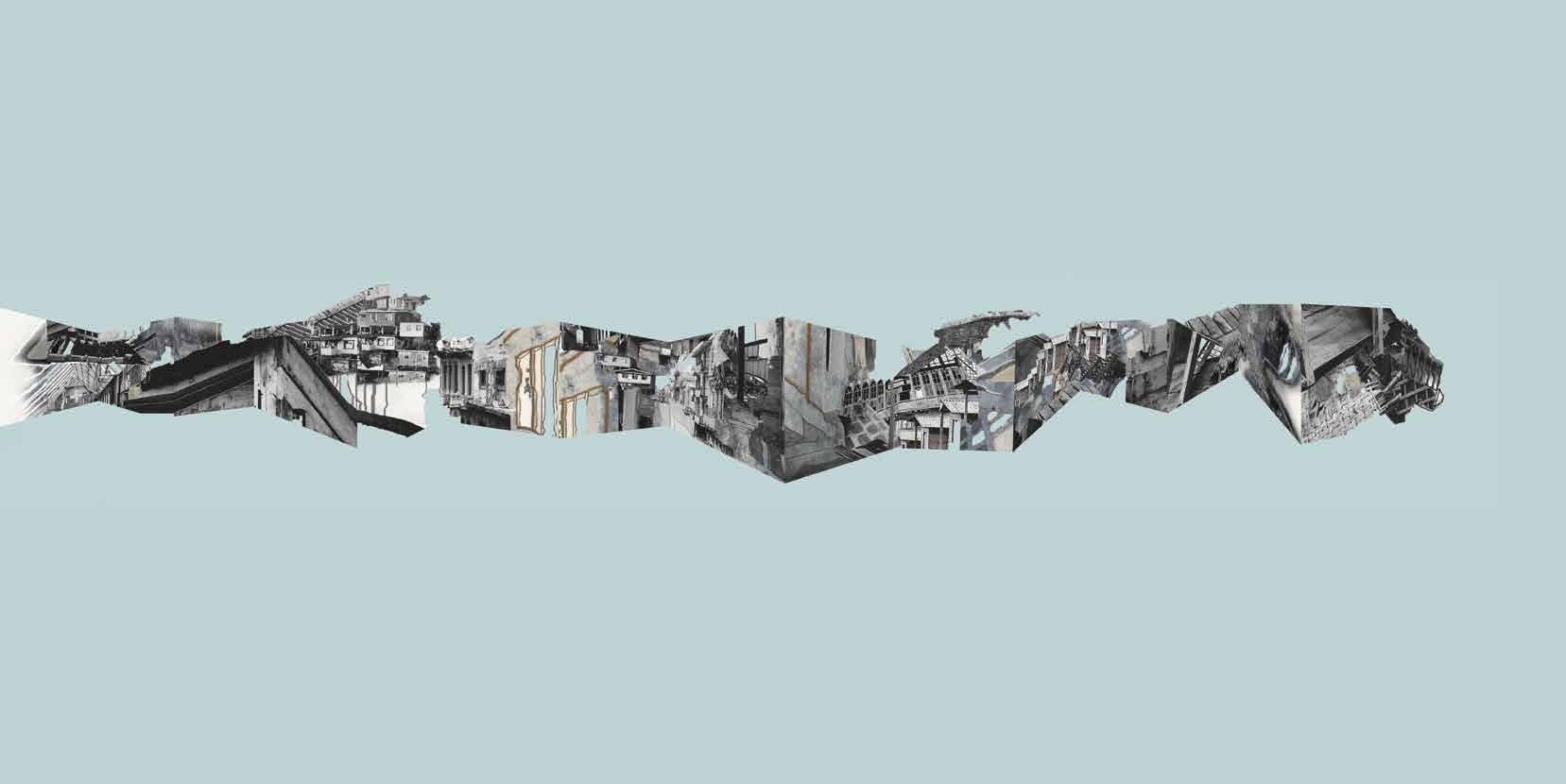
The body of the book
The covers of each book have been constructed from parquet floor blocks. When the covers are opened, its body unfolds in a concertina, which forms the pages of the book. The abstract visual narratives of the books’ contents refer to houses, boats, or fragments and remnants of found imagery and objects. The deliberate omission of reference to the human form places emphasis on the poignancy of human absence following a displacement event, along with the residual sense of loss.
The sole bodily human reference throughout the timeframe of this installation comes through my periodic performances. Here, prompted each time by the end of the trickling through of sand from an hourglass, I re-curate the installation by configuring the positions of the books, where their new placements would establish new visual relationships which could shape alternative readings and narratives. In this way, the books are animated by my acts of closing, opening, stacking and repositioning them. For me, this functions as a re-enactment of the processes of displacement and relocation. The performance further suggests an examination of remnants in the aftermath of displacement; or even a much later archeological exploration and documentation of the same.
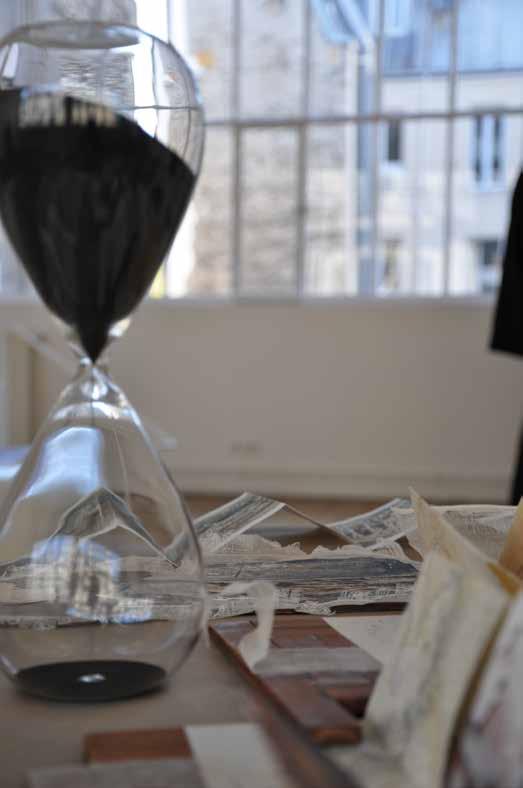
The book volumes
The full collection of books can loosely be divided into volumes: the House Books , the Boat Books , the Rupture Books and the Container Books
The first series I constructed was the House Books . The contents of these books focus on the re-imagining of a safe space through recreating a home-like structure assembled from several found images (such as in The Grieving Book and The Weeping Book ). My submission of these images to several invasive visual strategies - such as blurring, fading, and fragmenting – imply the progression of excavating, documenting and archiving the partial narratives of remembering yet forgetting a home. The repeated image is thus seen in its various stages of deterioration through the characteristic technical marks of the processes of digital print, photogravure, linocut, and collage.
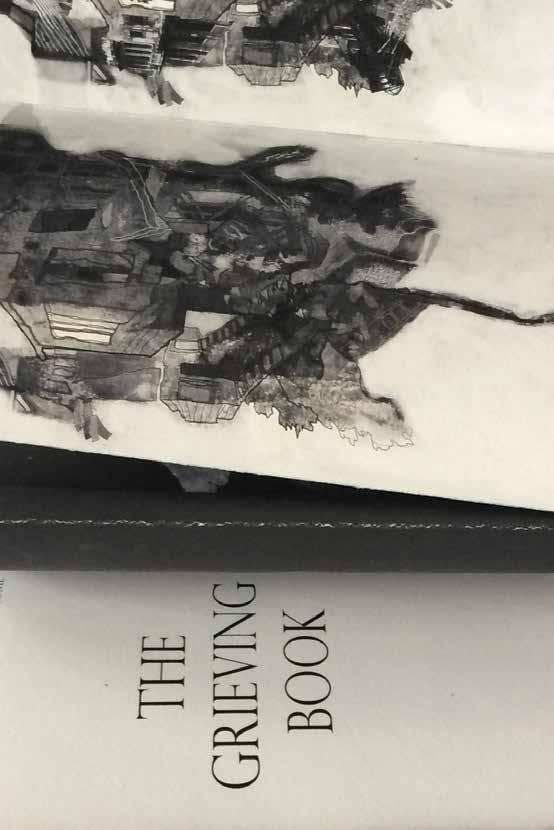
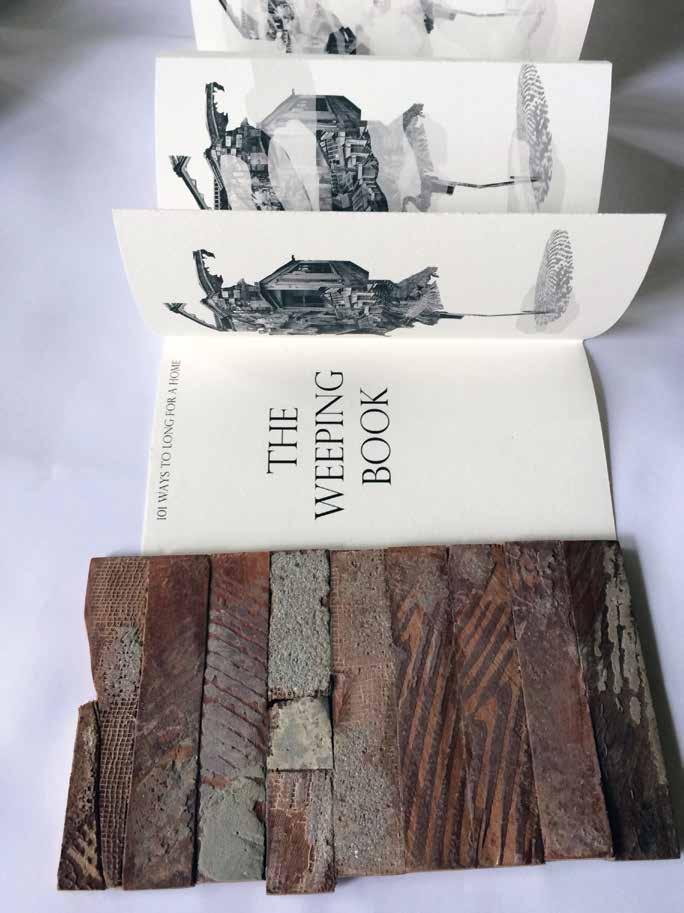
The Boat Books contain the recurring motifs of broken or decaying boats, metaphors for the instability and trauma experienced with involuntary uprooting and subsequent loss. Despite being a physical means of displacement, the boat also suggests a psychological journey. As water may be considered a symbol of the unconscious, so the worn-out boat might signify that the vessel carries the damaged psyche over treacherous waters.
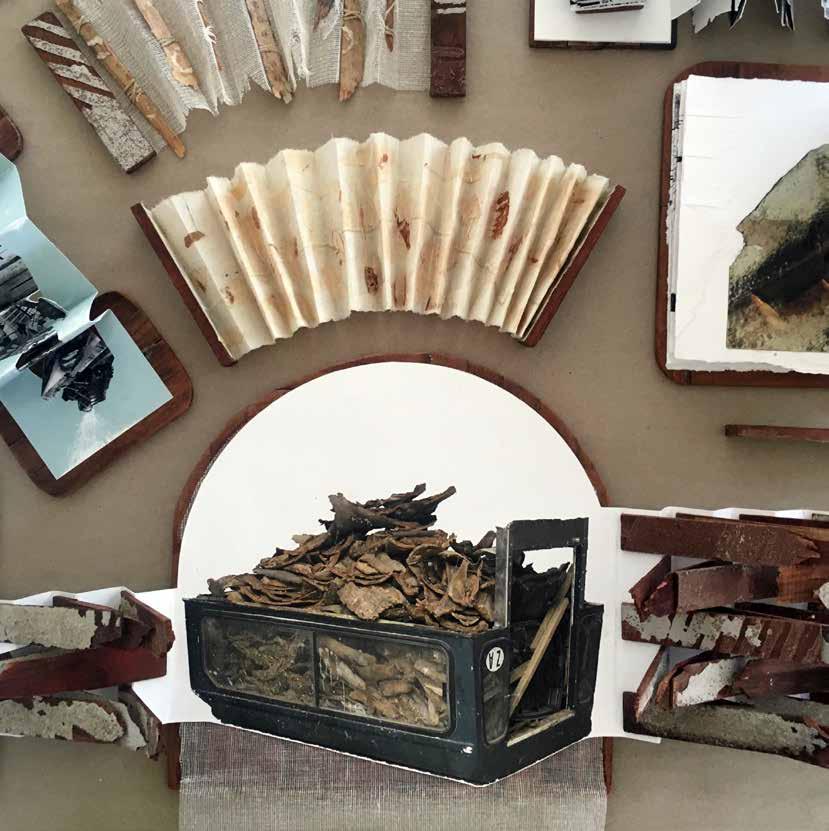
The pages of the Rupture Books are constructed from wooden parquet blocks that have been sawn in half lengthwise, rendering them thinner and more fragile than the covers. The actions of and sounds created by opening and closing the Rupture Books is reminiscent of the noise and the brute physicality faced when wooden floors are being ripped out of their foundations during the demolishment of homes.
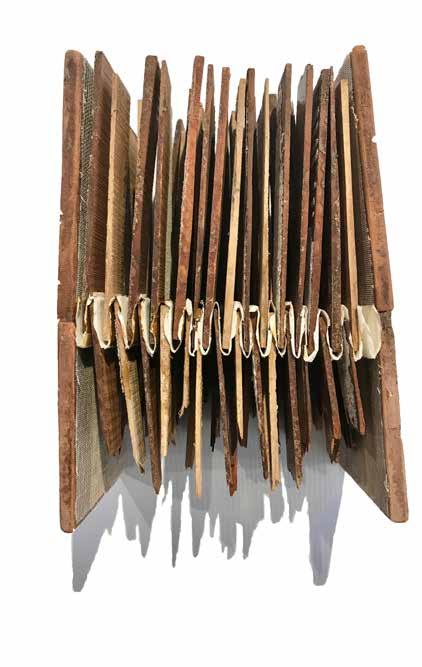
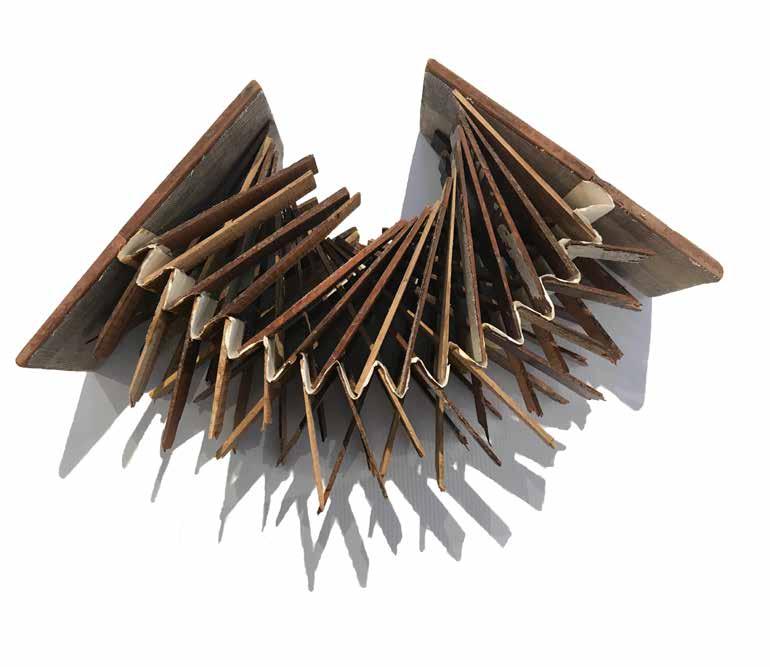
The series of Container Books consists of a variety of lidded boxes.
These are constructed from parquet floor blocks and filled with handmade papers and found objects. They suggest portable containers that carry precious relics of the lost home, keepsakes to be taken on the journey of displacement.
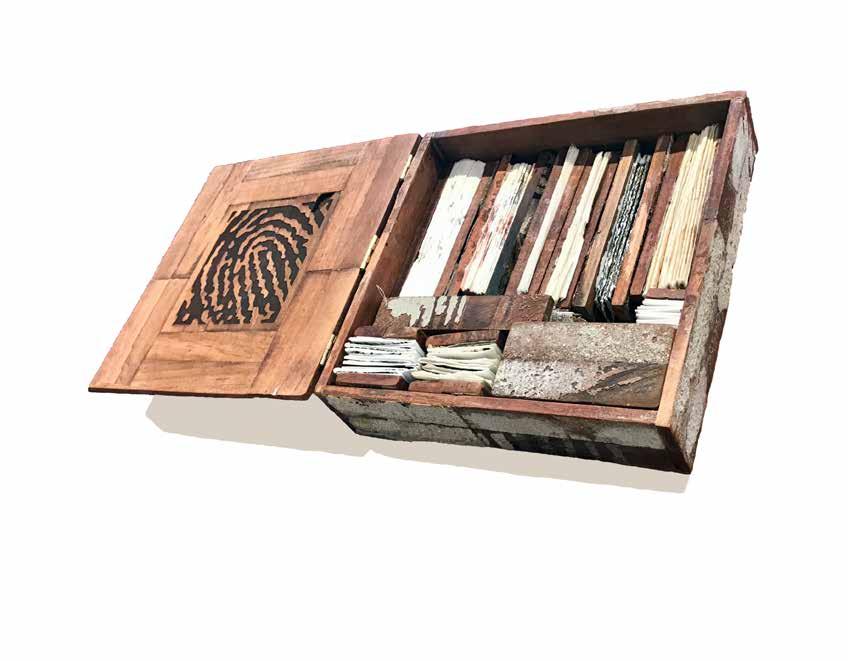
Relic book I (2017). Discarded parquet floor blocks and paper.
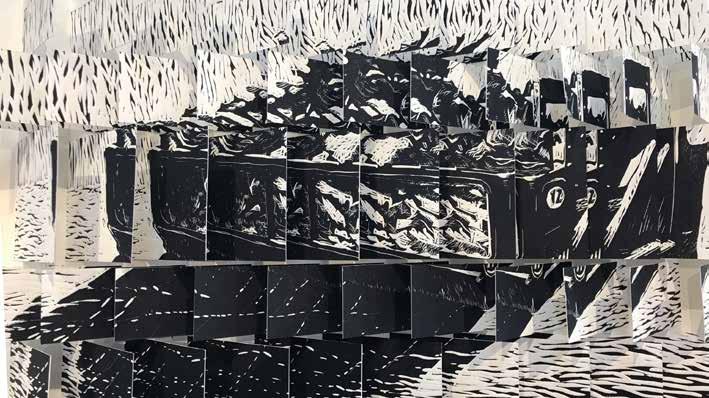
Book format
In its format and content, the installation 101 ways to long for a home challenges the traditional notion of books forming an orderly library of organised knowledge. Instead, it presents my attempt to review the fragile, complex and fluid nature of knowledge around the traumatic experiences of loss of place Unlike the linear coping focus advocated by the author of the self-help book, my intentions here are both to provoke often unanswerable questions, and to unearth broken narratives by revealing deteriorations, remnants and traces.
Above all, the 101 artists books present my own response to how a place may be experienced, along with an attempt to reveal how it’s physical history may have an impact on our understanding of place and place-making.
The dislocating book (detail) (2017).
Discarded parquet floor blocks and linocut prints on Fabriano Rosapina.

